-
Posts
441 -
Joined
-
Last visited
Content Type
Profiles
Forums
Gallery
Blogs
Events
Store
Downloads
Posts posted by SuperNikoPower
-
-
Hello,
If you have any questions about any of your Vive devices, feel free to ask those questions in their respective sections listed below.
For Vive and Vive Pro: https://forum.vive.com/forum/81-vive-and-vive-pro/
For Vive Cosmos: https://forum.vive.com/forum/83-vive-cosmos/
For Vive Focus: https://forum.vive.com/forum/82-vive-focus/
If you are experiencing an issue with Viveport or Viveport Infinity, please click on the following link to go to the Viveport forums. https://forum.viveport.com/
Thanks and enjoy your stay!
SuperNikoPower
-
We are coming up to the spookiest time of year. Full of ghosts, goblins.... well, let's be real, it's all about the candy. With VR being on the of best places to experience all of the scariest titles anywhere, what games are you going to be playing? Do you have recommendations for other people? Let us know in the comments below.
I have a couple favorites myself. Ones that definitely got a jump or two out of me.
The Exorcist: Legion VR is probably one of the most terrifying VR titles I've played so far. It's tough to really explain without spoiling a lot of stuff but basically, you are a priest looking to cast out demonic entities in 5 hair raising chapters. The jump scares are creepy but what's even worse is when you expect jump scares and they aren't there. Give this one a try if you can handle it. Check out The Exorcist: Legion VR here.
Sinister Halloween is all about the jump scares and dark atmosphere. It is Halloween night and you are out with your friends exploring haunted houses. Once you all enter this one, it seems different. You and your friends are separated and you now need to find and save your friends. Can you do it? Check it out here.
-
Hey @zsyed @Julien Merienne @oxygen4004, I am going to move this post over to the Vive Cosmos Support section so the right folks can get eyes on this.
-
The VIVE family of virtual reality products proudly offers the only native support of wireless for PC VR and we’re excited to extend that distinction to the new Vive Cosmos.

We’re fine-tuning performance of the Vive Wireless Adapter with Cosmos and are very close to releasing official support. We expect to deliver adapter compatibility with Cosmos in late October.
For existing wireless owners, a new Cosmos Compatibility Pack will also ship in late October. The pack will ship with a new 21W power bank, the connection cable for Cosmos, and a new pad to attach to the headstrap.

Due to the new inside-out tracking on Cosmos and other features, the headset draws slightly more power than the current Vive Wireless Adapter battery can support, so this battery is needed to power this headset wirelessly. In addition, Vive Cosmos processes all the camera tracking data solely in the headset and never sends the visual tracking data to the PC. While this means we are securing user privacy in their play space, this approach results in a higher headset power consumption.
The compatibility pack will retail for US $49.99 or regional equivalent. Overtime, we’ll simplify the wireless adapter assortment so only the new battery is shipped to Vive Wireless Adapter customers.
Thank you for being a part of the VIVE family. We will share the release date with you as soon as possible.
-
 1
1
-
-
Alright folks, let's keep this thread on topic.
-
Break out the cake and party favors, VIVEPORT turns three today! To celebrate, we’re offering a discount on 12-month Infinity memberships! Starting today through September 30th you can purchase an annual plan for only $7.99 a month. But that’s not all! We’ve also added the full version of Sariento VR to the Infinity library for a limited time.
As we celebrate our anniversary we wanted to take a quick look back at the evolution of Viveport. Just like the VR industry, we’ve come a long way since our 2016 launch.
Viveport first burst into the scene in 2016 as the app store for virtual reality where VIVE owners could discover lifestyle VR experiences. From art to creativity tools, travel, music, education, design and more, Viveport was the place to explore all that VR had to offer outside of gaming. But a lot has changed since launch as our service has progressed to meet the evolving needs and realities of the VR enthusiast.
We quickly realized that VR owners needed help navigating the burgeoning market for VR apps while developers were looking for another channel to monetize their content. To solve both of these problems we launched Viveport Subscription, the first VR subscription service, in early 2017. For one monthly price, subscribers chose five titles a month from our Subscription library. This new model for VR gave VIVE owners a chance to try titles before purchasing while offering developers an additional avenue for revenue.
In 2018 we greatly increased our library and potential user base as we added games to the service and support for Oculus Rift owners. Not just limited to VIVE headsets or non-gaming applications, Viveport doubled the content library for customers and doubled the potential audience for developers in its second year. In addition, we made massive upgrades to the service, improving usability and stability for our users. Improving our service is always ongoing as we strive to create the best user experience for Viveport customers.

While only in September 2019 has been our biggest year yet! We’ve made our subscription service unlimited with Viveport Infinity while continuing our mission to become a hardware-agnostic platform. Launched in April, a Viveport Infinity membership grants unrestricted access to the hundreds of apps, games, and videos in our Infinity library.
With Infinity, VR owners have the ability to play their favorite titles and discover new ones all at an affordable price. In addition, we’ve added support for Oculus Rift S, Valve Index, and Windows Mixed Reality headsets this year, assuring affordable access for the majority of VR enthusiasts.
Throughout the years, we’ve made it our mission to make VR more accessible to consumers while supporting the VR developer community. Thank you for being on this journey with us and making our Viveport community so awesome.

Wondering if you should check out Viveport Infinity for yourself? Here are what some members of our community are saying about the service:
“I am an Oculus Rift user and I feel right at home on Viveport. Viveport has a surprisingly wide selection of Oculus games and great a support team to boot.”
– Laurence
“The ability to checkout a lot of games before purchasing and then being able to jump right into purchasing is great too. The service is definitely one of a kind and I am excited to see new features and titles added as time goes on.”
– Edward Y.
Start your Viveport Infinity free trial today to gain access to unlimited VR gaming. For a limited time, Valve Index, Samsung HMD Odyssey and Oculus Rift owners can get two free months of Viveport Infinity. Click on your headset to find out more about these offers!
-
Hi @BIN,
I checked into an answer for you on this and the Vive Pro is locked in at 90. I am not sure if there is a work around for this. I am going to move your post over to our Vive hardware side of the forums and see if something else pops up.
Thanks,
SNP
-
Cory Corvus Dev Q&A
In our Developer Blog Series, we sit down with many of our VIVE colleagues who work with developers daily to highlight our way of thinking and help developers best take advantage of all the opportunities available at VIVE and VIVEPORT. This month, we’re chatting with Cory Corvus in our San Francisco Office.

Please introduce yourself. What do you do for Viveport?
My name is Cory Corvus and I’m a developer relations engineer for HTC Vive. I work with the content team to help bring awesome VR titles to the Viveport store. Usually, I’m busy helping developers with technical assistance, improving our SDKs and documentation, and giving talks about our new products like eye tracking with the Vive Pro Eye.
What attracted you to VR?
I got started with mobile VR and was blown away when I first tried it with my phone and a piece of cardboard. I got a taste of what VR could be and was really excited by the future potential. Shortly after that I got a DK2 and Vive Pre and have been working on VR projects ever since.
What is a normal day at the office for you?
Normal days include supporting developers by answering questions about VR development, SDKs, and hardware. As a part of the content team I also get to help find and play new titles to bring to Viveport.
How do you work with developers to bring and optimize their content for Viveport?
It depends on the developer and their needs. Generally, I’m answering technical questions via email or the forums, providing design feedback, and sharing developer feedback with internal teams.
Do you have any best practices to share for developers who are currently working on VR projects and thinking about distribution? Anything they can do to be better prepared on a technical level?
Yes! VR is still a young industry and developers should expect fast paced changes so it’s important to think about supporting multiple HMDs and store platforms early. Best practice is to find ways of separating the core of your app/game from specific HMDs or store SDKs. For example, using wrapper functions or initializing your content for different HMDs before loading into the game. Planning architecture decisions early can really help make it easy to port between platforms and add support for new hardware.
And for developers starting on a project, what should they keep in mind when planning out their scope and future development?
Planning out the scope of a project or future development can be tricky for VR. Many common design decisions and best practices that work for 2D games may not apply to VR development. That being said, my suggestion would be to not try and reinvent every design choice for VR. It may be tempting to create a fully skeuomorphic UI with 3D objects for everything or creating a brand-new locomotion system for your game. But these design decisions can create a lot of work that may not improve the user experience that much so don’t be afraid to use a normal floating UI panel or teleport locomotion. Speaking of teleport locomotion, it’s important to remember that VR can cause serious motion sickness for a large number of players so always include comfort options and minimize artificial locomotion if you want everyone to be able to actually play your awesome game.
What is that one-handy tip you find yourself often telling developers who are finishing up and putting that last layer of polish on their title?
The most important thing to do when finishing a project is to spend some time performance profiling. For VR it is very important to hit a consistent frame rate and to not drop frames. Spending the time to improve performance can really help the quality of an experience. Also, improving performance is great for lowering the minimum specs required or if you are targeting mobile VR it is very important to be efficient which can improve battery usage.
I know you are also heavily involved with enabling developers to integrate eye-tracking with the Vive Pro Eye. At a high-level, how can a developer get started with eye-tracking?
Obviously getting a Vive Pro Eye HMD is helpful for development and testing eye tracking applications. But ambitious developers can integrate features such as foveated rendering with just the game engine plugins we provide. Besides the hardware, it’s required to install the eye-tracking runtime which is necessary for running any applications which support eye tracking. Foveated rendering plugins have a special requirement of currently needing a NVIDIA Turing GPU but isn’t necessary for other eye-tracking uses. If you’re interested in eye-tracking, you should download the SDK from our developer resources site and we have a Unity plugin on GitHub or the asset store.
· https://developer.vive.com/resources/pc-vr/
· https://github.com/ViveSoftware/ViveFoveatedRendering
· https://assetstore.unity.com/packages/tools/particles-effects/vive-foveated-rendering-145635
What kind of experiences does a feature like eye-tracking enable?
The most important eye tracking feature that all VR apps and games can use is foveated rendering. Foveated rendering can improve performance by reducing the resolution in the user’s peripheral vision or with super sampling it can increase the resolution and quality where the user is looking. The technology required for foveated rendering is pretty advanced but we’re providing plugins for Unity and Unreal which make integration quick and easy. Other use cases can range from improving training and analytics to scrolling menus or text by just looking at the edge of a UI.
What is the coolest thing you’ve seen using eye-tracking that you can talk about?
Besides foveated rendering (which is a pretty awesome feature), my favorite use case is enabling aim-assistance in any experience that has throwing or shooting. Throwing objects and shooting guns or bows is popular in many VR games and since people always are looking at their target using eye-tracking can give a really nice aim-assist. For example, the game QuiVR has a special power up that enables eye tracking arrows which will snap mid-air towards where you’re looking and feels really satisfying!
We’re gearing up for the imminent release of the Vive Cosmos. We’re all quite excited here at Viveport. What are you looking forward to with the release of the Cosmos?
I’ve been using the Cosmos a lot recently and really enjoy the flip up design and screen quality. Being able to flip up the HMD to check my monitor and do work is very convenient for developers. The screen resolution is really great for improved clarity and being able to read text in VR. Also, being able to setup and use the Cosmos without base stations is great when I’m giving demos or setting up in a new location.
You’ve been helping as many developers as you can get ready for the Vive Cosmos release and make sure their titles are compatible. For most cases, what can developers expect to be compatible out-of-the-box and what will they need adjust?
Cosmos works with the OpenVR SDK and SteamVR runtime so if your title already works with SteamVR then it’s going to be easy adding support for Cosmos. The main change from the Vive Wands is that there’s a joystick instead of a trackpad. There is also more buttons and a trigger bumper so developers will need to think about how they can use these extra inputs to make the user experience even more intuitive.
Any resources a developer interested in ensuring compatibility with Vive Cosmos should check out?
Check out the blog post and forums to get the latest Cosmos developer info:
· https://developer.vive.com/resources/2019/06/04/getting-started-with-cosmos-development/
· https://forum.vive.com/forums/forum/77-vive-cosmos-developer-faqs/
Alright, the penultimate question! Any excuse to use that word from when I studied for the SATs forever ago. What are one or two of your favorite experiences in VR? What do they do well?
Recently I helped with the launch of Westworld Awakening developed by Survios and was so impressed by the quality of characters and animation. Besides being a fun game with good controls and based on a show I really enjoy, I was blown away by the lifelike quality of each NPC in the game. You can really get close and appreciate the fine details in their faces and movements.
And finally, if you could tell all VR developers out there one thing, what would you tell them?
VR development can be very challenging. Since it is still a young industry and a small developer community, I think it’s very important to reach out to your fellow developers, share any useful knowledge you’ve learned, and don’t give up!
Thanks for taking the time to chat, Cory! You can connect with Cory Corvus at LinkedIn here and if you want to get started with Viveport, head off to the Developer Console. Next month, we’ll chat with another member of our developer-facing team.
-
 1
1
-
-
HI @SnowySquid,
I have converted your post into a ticket for our Customer Care team. They will be able to help you dig into this more and see what can or needs to be done.
Thanks,
SNP
-
Hi @KGSnake24,
When it comes to RMA situations, our Care folks are usually pretty on time when it comes to time frame for replacement. Unfortunately, this is the only way to replace your adapter.
-
I would definitely jump in with Pixel Ripped 1989, Torn, Transpose, A-Tech Cybernetic, Job Simulator, Vacation Simulator, Blind, and Westworld.
-
Hi @Calvoon,
I've gone ahead and created a Customer Care ticket for you. You will receive a confirmation associated with the email address tied to your forum account.
Thanks,
SNP
-
Thar be high-seas mayhem ahead in the all-new rip-roaring pirate combat game exclusively for VR.
(YouTube)
After months of anticipation, Survios’s new VR game Battlewake is available now on Viveport for $29.99, with an additional 15% launch discount, or as part of your Viveport Infinity membership.
This highly-anticipated seafaring action combat game transforms players into super-powered Pirate Lords fighting for ultimate naval dominion. Captain a massive battle-ready ship, navigate lush, elemental seascapes and embark on a larger-than-life nautical war for the ages. Players can currently navigate the epic 20-chapter story Campaign or embark on endless Warfare mode in single-player; multiplayer support and PvP deathmatch Plunder mode will be added soon!

The Seas of New Urth constantly churn with the raging surge of battle. The treacherous Queen’s Company has taken your lands, your freedom, your riches, your power. Once squabbling towards extinction, the Pirate Lords now join forces to destroy their common foe, bound in blood by the demon Andromalius. They must regain their seas, avenge their families, take back their riches, and restore their world, with the fate of New Urth hanging in the balance. But will greed prevail?


Set your course for September 19th, for not only is it a very important holiday for all pirates around the world, but it’s also the start of a thrilling community event that we can’t wait to share! Get your plunderin’ parties assembled over at the official Survios Discord, and we’ll see you all upon the high seas…
-
Are you ready to head for the Cosmos?
The Cosmos pre-orders begin September 12th. This week on our Twitter channel, we'll be sharing more on COSMOS, Vive Reality System, & media previews. Don't forget to visit www.vive.com/cosmos on the 12th to get all of the information you need about the Cosmos as well as pre-ordering your very own.
-
The good news is 1060, 70, and 80s are dropping in price pretty good. To give you an idea, a 1080 has been as low as 400 and 1060s have been down to 150. So there is room to play around and still get a good to great VR experience.
Soon enough, you will be all up in the world of VR.

-
You shouldn't have to. Once you are connected via headset, it should detect it directly. If for some reason it doesn't, it should show up in your redeem page in the short term future. You can check out https://vprt.co/IndexDeal for more information.
-
Viveport Infinity continues to expand its hardware-agnostic offering while gifting two free months of the subscription service to all Valve Index Owners!

VIVEPORT is announcing today that its Viveport Infinity service has officially started supporting Valve Index headsets, making the service now compatible with all major consumer PC VR devices. To celebrate, Valve Index owners can redeem two free months of Viveport Infinity, Viveport’s unlimited VR subscription service. Starting September 1 through the end of the month, new and existing Viveport Infinity members who own a Valve Index can redeem their two free months to take advantage of all membership perks and benefits, such as purchase discounts and access to premium Viveport Video content.
With a Viveport Infinity membership, Valve Index owners save thousands of dollars as they discover their favorite VR games, apps and videos. The first unlimited subscription service for VR, Viveport Infinity is $12.99 a month, or only $8.99 with a prepaid annual subscription. Valve Index members will gain access to hundreds of top-rated VR titles including Ninja Legends, A Fisherman’s Tale, Apex Construct, Fujii, Gun Club, Angry Birds VR and I Expect You To Die. New titles are added every month, ensuring Viveport Infinity members always have new content to explore.
“We’re giving VR enthusiasts access to much more top-rated VR games and apps than ever before for a low monthly price,” said Rikard Steiber, President of Viveport. “In just one year, we’ve made great strides in our mission to become a hardware-agnostic platform, opening up our service to VIVE, Oculus Rift, Windows Mixed Reality and now Valve Index devices.”
All Valve Index owners who either have an existing Viveport Infinity membership or sign up for a new Viveport Infinity membership throughout the month of September will automatically receive two free months of the unrestricted gaming service. These members will be able to take advantage of all Viveport Infinity membership benefits during this promotional period including monthly coupons, free title giveaways and premium content on Viveport Video. More information on how to redeem this offer can be found in this guide: https://vprt.co/IndexDeal
-
In the recently released Viveport Infinity title Afterlife, viewers will embark on the emotional odyssey of a family stricken by grief at the loss of their young son. Merging VR filmic techniques and branching interactive narrative design, Afterlife crafts a multilayered story that reveals its many complex facets based on viewer decisions. We spoke to the creators of this powerful emotional experience to find out how they brought this immersive experience to life.
Interview by Nathan Allen Ortega, Viveport Staff
For those unfamiliar, tell us a bit about yourself and the team at Signal Space Lab
Jose Aguirre, Studio Director: We started (2015) as an audio service provider for major video game studios in North America and then evolved into XR (Mid 2016). We used our experience with so many games from so many great developers and merged it with a relatively new platform (VR) on an even newer type of content (Interactive Filmmaking).
We are a team driven by curiosity, we challenge ourselves with every single project because we enjoy creating our own rules. I guess that’s what you get when you work on someone else’s project long enough, once you get the chance to work on your own vision, you want to make it unique and take the risk of exploring a new approach to interactive narratives.
Our team is based in Montreal, Canada, and we are currently sixteen team members.

What were your main sources of inspiration when creating Afterlife?
Jose: On the technical side, we wanted to offer a new way of creating story based content in live-action. Some studios are working on very interesting and cutting edge projects, a lot of them rooted in tech. We are taking a step back, still staying in 3dof but pushing on the narrative angle and proposing a new way of user interaction; one where the user interacts -with very little interruptions or visual clues other than the story itself. I wouldn’t say our tech is super complex, but the process of merging video game, interactive and film elements into one product is what makes this project very challenging and this was very seductive to us on the technical side.
Luisa Valencia, VR Director: During research, while reading a bunch of stories about families that were experiencing loss, I found this heartbreaking story about a family of five. The father was traveling and the mother had swimming class with their middle child (3 year old) while the other two kids (6 and 1) were with their nanny. When she came back from swimming lessons, she found her other two kids stabbed in their bathtub, killed by their nanny.
A few years later, the mother that had experienced this terrible tragedy did an interview remembering one time she was with her only surviving child, and observing how her child was coping with the death of her siblings. She then realized how different the two of them were dealing with the tragedy; recognizing the ability of kids to be able to live in the present moment, living and seeing life as it is, she then realized: “We all should be able to do that.”
During this time, I was also dealing with the deterioration of my father’s health, which eventually led to his passing. When I read the mother’s reflection about her daughter, I realized that that’s what I needed to hear during my own process of grief – that I needed to live and see the world as that child does.
That story inspired what was to become Afterlife. It made me want to use the amazing tools of this technology to share and convey this message to others.
Signal Space Lab’s previous works include other interactive cinematic narratives, along with family friendly AR experiences and VR experiences based on traditional game franchises. Can you speak a bit about your studio’s philosophy on storytelling and what inspires you to utilize new technology to craft engaging stories?
Luisa: We are inspired by the possibility of transmitting powerful emotions to people.
Jose: In order to do so, you need to have a team that is willing to try new things both on the technical and the narrative side. We spent a lot of time figuring out what could be the perfect marriage of technical innovation and compelling story, once we are all happy with that, we get to work.

Were the main themes/beats of the story something that was clear pretty early on in development or did they evolve over the course of production?
Luisa: The beats and the branching structure were planned before production. At the very beginning of development, it was clear for us the scale we wanted to go for, and based on this, the stories feeding each branch were evolving as the production progressed.
The performances in Afterlife are pretty intense. Did directing actors in an immersive VR narrative with lots of story permutations prove difficult in comparison to more traditional 2D linear filmmaking? What was the secret to getting such stellar performances out of the cast?
Luisa: Yes definitely, directing a 360-3D film proved way more challenging than directing in a 2D traditional format. However, for this project, I had the fortune of working alongside Alison Darcy, a fantastic theater director. We definitely complemented each other strengths on Afterlife‘s set. Thanks to her work and the dynamic she had with an incredible cast; we got wonderful performances.

The story/experience of Afterlife has a lot of branching paths, with audiences getting new bits of info as they explore the different facets to the story until a more complete picture forms. Tell us a bit about the design process that goes into crafting a satisfying and unique narrative that adapts organically to the audience’s behavior?
Luisa: For the design process, I took the traditional three act narrative structure of storytelling. I wrote the first pass of beats of the story, knowing that I wanted to tell the story from three character’s point of view towards a shared experience or tragic event. I started to write the backbone of the story inspired by the mom, and then I started branching from there. I went back to the beginning of the structure and wrote the second main ramifications, making sure that I was respecting the timings of the backbone. Finally, I repeated the process for the third time and added the visible interactive elements. We took meticulous care about continuity considering Afterlife‘s unprecedented scale.
While working on the structure of the narrative, the development and technical teams were working on researching and developing both the navigation and the decision making process to accomplish user’s interactivity as organic as possible.
Were there any development challenges that you ran into that you didn’t expect?
Jose: When you do something new, you always encounter the reality of learning from your own mistakes, this wasn’t an exception. From writing the outline of this complex narrative, to porting it for the different VR platforms, each step of the way we ran into roadblocks that we needed to overcome. But this is precisely why we love doing what we do.

As an immersive storyteller, what do you want to see change/improve in the world of VR in order to further empower you in crafting more engaging interactive narratives?
Luisa: As creators, we want to see more investors paying attention and allocating funds to explore the vast potential of interactive live-action narratives as a tool to create and as a tool to tell stories.
How long did Afterlife take to develop and how many people had their hand in things throughout?
Jose: It took almost 18 months to make, with a team of 15 people working on the project (30 including cast and crew).
What feeling/emotion do you feel encapsulates Afterlife the most?
Luisa: When Afterlife was being conceived I wanted to explore different feelings through each character but love was always present throughout the story. The feelings that came along with loss, like: guilt, remorse, and pain, were encapsulated in the story in order to provoke change in each character, and hopefully, to provoke change in the user that experiences the piece.

Any thoughts on a potential Afterlife 2? (Af2life?)
Luisa: We are definitely focused on creating new and better seamless interactive branching narratives. Afterlife 2, for the moment is not in our plans. This is a new medium, and I would rather have a chance to create happier stories. As a studio, we want to keep exploring and challenging concepts.
What’s next for Signal Space Lab?
Luisa: We want to position ourselves as a creative powerhouse, so we are always looking to try new and exciting projects. We are currently in pre-production for two new projects (own IPs), and are looking for interesting partnerships to keep pushing the boundaries of what we can do with interactive storytelling, and obviously keep growing as a studio.
Sounds like exciting things are on the way! Thanks so much for your time.
Afterlife is out now on Viveport and is available as part of your Viveport Infinity membership. Not a member? Start your free trial today and experience this and hundreds more immersive VR titles all for one monthly fee.
-
The Viveport team visited the land down under to speak with MarineVerse, developers of the #VDA nominated title VR Regatta - The Sailing Game, to hear first-hand what went into making this authentic and educational virtual sailing experience
Here is a description for VR Regatta.
VR Regatta is the leading virtual reality sailing game. Explore the the immersive, inspiring sailing experience that awaits you on the open seas.
Veterans of sailing and newcomers alike are invited to discover the relaxation and exploration at Akalana Islands. Journey through the sunrise and sunset as you compete in challenges and races to progress your career, or simply enjoy a peaceful moonlit sail.
Your VR Regatta experience can inspire, relax and educate you about the world of sailing. Join the global community of players, exploring your dream seascape in a sailor’s paradise.
(also playable on Oculus Rift)To check out VR Regatta, head on over to our Viveport page. You can also take a look at our Viveport Live episode where we play the game as well.
-
Set during the events of Westworld Season 2, “Westworld Awakening” is a narrative-driven, single-player stealth exploration experience played from the perspective of Kate – a host within the Mesa facility who has attained self-awareness and must undergo a journey of self-discovery to understand exactly what that means. To survive a dangerous underworld where no one and nothing is what it seems, you must take matters into your own hands and, using a Quality Assurance tablet, manipulate the world around you.
As you navigate Delos’ labyrinthine laboratories and offices, you will encounter iconic scenes and settings, solve puzzles, and interact with (and manipulate) other hosts. All while Hank, a relentless serial killer host who has stalked Westworld for generations, is in constant pursuit, forcing you to react quickly even as you venture further into the unknown. To escape, you must plunge into Westworld's secret past and overcome an entire world designed to destroy and enslave you.
You can check out Westworld Awakening here in the Viveport store.
-
In this new Developer Blog series, we’re interviewing many of our VIVE colleagues who work with developers daily to highlight our way of thinking and help developers best utilize all the opportunities available at VIVE and VIVEPORT. First up is Kris Severson from our San Francisco Office.

Thomas: Hi Kris! Even though I already know, can you tell us a bit about your role and responsibilities at VIVE?
Kris: Sure! I’m the Director of Global Content Partnerships, which means I work with the development community worldwide to bring the best content possible to Viveport. This includes everything from premium games to compelling narrative storytelling and other cool things you never thought you’d experience in VR.
Thomas: How did you end up at Viveport and in the world of Virtual Reality?
Kris: I started out in gaming, working for Sony PlayStation back when it was a little start-up. I got a real birds-eye view of the industry, working with every major PC and console publisher/developer. After PS2 launched, I joined the team at Rockstar Games right around the time they were releasing Grand Theft Auto 3, which was a heady experience. Working at both a hardware platform company and then moving to the other side of that as a game publisher gave me a lot of insight into the pain points of both sides of the game business. This is one reason I love working at HTC, helping to evangelize amazing new hardware technology and collaborating with content creators in a whole new medium.
Thomas: So, you must talk to a lot of developers?
Kris: I do talk to a lot of folks who are passionate about ridding the world of zombies 🙂
Thomas: What is the #1 question you get from developers?
Kris: Ha, right now it’s: “When can I get a Cosmos?” and “When can I get a Pro Eye?”. Really, it’s amazing to see how everyone is so passionate about the hardware innovations happening in the XR world, and it’s great working at a company that is always on the forefront of that. It’s fun to see developers get really inspired by the possibilities of things like eye tracking and volumetric video capture. The creative world is on fire right now, and the consumer is the big winner of that.
Thomas: We’re seeing a lot of that creativity publishing onto Viveport. For a developer who is considering Viveport, why should they publish with us? We’re growing rapidly but we don’t have the user size yet of Steam or Oculus Store.
Kris: I have more than one answer for that!
We do some of the best marketing campaigns in the business. We work with each developer on an individual basis, figuring out the best marketing opportunities tailored to their particular content and collaborate on any crazy and unique ideas they may have. We go the extra mile, from painting the storefront red for the SUPERHOT’s launch, to creating some pretty stellar MR videos for games like Angry Birds VR and Takelings.
Viveport has a broader demographic than just the traditional gamer audience on Steam, so it’s a chance for a larger variety of content to get more visibility with the consumer. We have a great blend of both games and apps, and we’re passionate about promoting all kinds of VR content. Not only by genre but hardware too. We support content for not only Vive headsets, but also Oculus and Windows Mixed Reality. Add to that our mobile storefront for WAVE devices, and you can see how we’re establishing Viveport as the destination storefront for everyone.
We also have our location-based business, Viveport Arcade. When you launch your content on Viveport, it’s a simple click of a button to also launch with our arcade operators worldwide, increasing your reach instantly out into the LBE world. This provides a whole other revenue stream for your content and is much easier than trying to negotiate commercial licenses individually with operators.
Lastly, Viveport is the only store to have a subscription service, which sets us apart from everyone else in the VR world.
Thomas: Subscription is a pretty big deal for us – for a new developer, what is our Subscription service briefly?
Kris: Viveport Infinity is our subscription program where a user pays a flat monthly fee and has unlimited access to titles opted into the service. We’ve got an impressive collection of titles that is growing every day.
Thomas: And why should a developer opt-in for Viveport Infinity?
Kris: I always tell developers there are multiple ways to use our subscription service to their advantage. For one, it’s a great way to launch your title and get increased buzz in the community. We really focus on amplifying new content coming into Infinity, so you get maximum exposure with the consumer right out of the gate. For multiplayer games, it’s an amazing vehicle for user acquisition. A significant amount of our traffic happens in Infinity, so this can greatly increase your overall user base and cross-platform play.
Subscription is also great for content that is out of the mainstream; consumers get to try as many games and apps as they want and are more willing to experiment with an unknown title. Titles that have out there for a while can benefit by coming into Infinity, adding another marketing cadence to their content and revving up the sales cycle again. We’ve seen titles make as much (if not more) with ongoing Infinity revenue than they do in the paid download sections of stores.
A lot of this depends on price point, stickiness of content, and re-playability…we work with developers to figure out the best strategy for every piece of content. If it isn’t optimum to launch in Infinity, we still welcome you into the paid download section of the store. Bottom-line is that we want this to be a win-win situation for everyone…we want developers to make the most money they can so that they can go on to create more great content down the line.
Thomas: From your perspective, what is the #1 challenge VR developers face today?
Kris: I come from the console gaming world, so I’m used to having millions of installed units across mass market consumers. Right now, we all need more headsets on heads. We need to collectively evangelize the technology and get the word out that VR is not just a phone strapped to your head playing 360 videos. Part of what makes HTC great is that we have the best hardware experience, and we’re dedicated to partnering with the development community to bring the best content to consumers. We know it’s hard for developers to keep the lights on right now, so we’re investing with our partners for the long haul.
Thomas: And speaking of investment, conversations I often have with developers often include the word “funding”. Can you outline funding opportunities that come up at HTC that you’re directly a part of?
Kris: As I just mentioned in regards to keeping the lights on, yes, we are actively funding a highly curated selection of content for both PC and Wave devices. We want the best content for Viveport customers, particularly for Infinity subscribers. While Viveport does not operate in the sense of a first-party publisher and first-party budgets, we do function as a third-party supplemental funding source for developers. Also, there is the Vive Studios program where developers can apply.
Thomas: Any tips for a developer approaching HTC or other companies about funding?
Kris: Have a fully fleshed-out proposal. Come with different levels of potential funding options, opening a dialog to discuss various ways in which to partner together. Keep in mind that support can come in different forms as well, from hardware seeding to marketing opportunities with significant in-kind value.
Thomas: What do you hope to see VR developers focus on in the future?
Kris: I also head up HTC’s VR for Impact initiative, so I always love seeing projects with a real social impact. Earlier this year we launched Tree, which generated donations to the Rainforest Alliance in support of reforestation around the world. We all love doing good.
Thomas: Down to the last question. If you could tell all VR developers out there one thing, whatever that may be, what would you say?
Kris: Be a little crazy. For instance, who would have thought shooting fruit in a supermarket would be that much fun [i.e. Shooty Fruity]? Be a little simple. Beat Saber surprised everyone…sometimes it’s the easy-to-learn, hard-to-master ideas. And be a whole lot optimistic. We are just getting started and I know there are so many mind-blowing VR experiences yet to come.
Thanks Kris for taking the time and doing what you do for developers! And developers, thanks for reaching! You can connect with Kris Severson at LinkedIn here and if you want to get started with Viveport, head off to the Developer Console. Next month, we’re sitting down with Jennifer Bullion, Developer Marketing Manager at Viveport, to hear about what she is seeing are the most successful strategies reaching VR customers and all the marketing opportunities available to developers.
-
In our Developer Blog Series, we sit down with many of our VIVE colleagues who work with developers daily to highlight our way of thinking and help developers best take advantage of all the opportunities available at VIVE and VIVEPORT. This month, we’re chatting with Thomas Gratz in our San Francisco Office.
Please introduce yourself. What do you do for Viveport?
My name is Thomas Gratz and I’m a Senior Manager here at HTC, leading Developer Marketing for Viveport, which is HTC’s content distribution platform and storefront for virtual reality. When I describe my role, I always split Developer Marketing into two sides. First, we try to reach as many VR developers as possible and bring their titles onto Viveport. We work hard to earn developer trust and participation in our programs like Infinity or Viveport Arcade. Second, we aim to provide the best marketing support in the VR industry by helping titles get discovered by VR users. We line up promotions and amplification of announcements, releases and sustainment after launch.
And you’ve been at Viveport practically longer than anyone else in the San Francisco office, right?
That’s true and a bit crazy to think about when you put it that way. I’m celebrating my 3-year anniversary at Viveport this month. When I joined, there was essentially Rikard Steiber who is our President and a few VPs. The VP of Marketing had been hired two weeks earlier and he quickly brought me on board as we needed to launch Viveport globally in just a few months. I was the first marketing hire at Viveport and it has been quite an experience watching the team and product evolve since.
What made you want to join the Viveport team?
I was at Microsoft prior to joining HTC. At Microsoft, I had my first experience with XR using the HoloLens. I got to take a device home for a few weekends for testing prior to the developer kit releasing. As soon as I had hands-on time, I knew I wanted to work in this emerging industry. I had my first experience with a VIVE when a buddy of mine gave me a demo of “theBlu” when he went to go work for a VR startup in downtown Bellevue. My experience at Microsoft also pushed me toward creator communities and empowering others. This role on the Viveport team checked all the boxes and it was an opportunity to get on the ground floor of a brand-new business unit at HTC. The Vive had just been released and developers were just starting to dig into VR content creation.
What does a typical day at the office look like for you?
It changes all the time and is hard to predict even 3 years in. I just came back from a trip to Europe where we filmed 3 different developers telling their story of VR development. My team has this Viveport Developer Story program where we produce a 3-to-4 minute video asset which can be used to market both the developer and Viveport. Our goal is to inspire other creators, provide interesting insights and recognize a growing community of VR developers across the world of different cultures, backgrounds and motivations. It’s one of my favorite parts of the job.
In a normal day, I’m speaking with a lot of developers – coordinating their release dates, collecting assets needed for marketing, etc. I’m working with our Customer Marketing team on store
programming, newsletter placements, making sure we’re highlighting great titles and talented developers. I work with our Content team so they everything they need to talk with developers 1-1. I decide which developer events we choose to sponsor and decide our messaging, logistics and outreach at events we do participate in.
And in quiet moments (not often), I work on our strategy as a team, sit on the greenlight committee for Viveport funding opportunities and share input on the Viveport leadership team on the direction we’re taking and goals we have.
How do you work with developers to promote their content?
Most of the time, developers are referred to the Developer Marketing team by our Content Operations or Content Acquisition teams. They either have submitted their title to the Viveport Developer Console and are expecting to release in a few weeks or are having conversations about coming to the platform. With the introduction, we’re usually called upon to look at the title and evaluate how much marketing support we may be able to provide, depending on the title, distribution plan and release date. After a call and some emails back and forth, we usually have a game plan in place – general timing and what each side needs to execute effectively. We outline all the opportunities to promote across Viveport channels and provide a list of needs from developers (most of the time, information and assets). Once we receive what we need, we turn it around as fast as possible and prepare internal teams to execute.
Post release, we remain in contact with all developers on the platform and let them know about future promotion opportunities we think their titles are well suited for. Of course, developers also reach out directly about their latest updates and plans and we do our best to support.
There’s no shortage of titles on Viveport from all the good work our content team is doing (check out last month’s blog with Kris Severson, Director of Content Partnerships). How can developers prioritize themselves and make your job easier?
Ha, it didn’t used to be that way. We launched Viveport with roughly 75 VR titles. The service has grown so much since then. We’re over 2000+ titles now including high quality games and apps across all territories that Viveport supports. You are correct that we can’t support everyone now in the way that we used to and there are things developers can do to be prioritized and get our attention.
First and foremost, developers who can consistently lock in their release dates and hold to them are a rare unicorn in my experience. A lot of marketing must be planned prior to builds getting submitted or finalized and developers who can deliver on their initial plans that we work towards are easily prioritized. If dates slip, our bandwidth and inventory changes and it could mean the marketing scope of our campaigns are impacted. The importance of quality marketing assets can’t be overstated. A quality asset has art that is both unique and conveys immediately what the VR experience is like. It catches the eye and is easy to digest at a glance. It is often a user’s first and only impression of a title and bad assets will ruin a good game’s chance to be discovered. Titles that distribute to all available territories make our lives a lot easier as we can plan for universal messaging across all our channels without worrying about some customers not having access. Compatibility across all the headsets that Viveport supports is also very helpful as we’re pushing to audiences with any VR device, not just VIVE.
Finally, titles that opt-in for Viveport Infinity are always prioritized over non-Infinity titles. Most Viveport customers today come to Viveport as subscribers and we want to highlight the titles relevant to them. Infinity is our key differentiator as a content platform and titles that opt-in to the subscription service are guaranteed increased marketing support.
For those developers considering submitting to Viveport, what is the best way to get connected and work with the marketing team?
As mentioned, most developers get in contact with marketing through our Content Acquisition and Content Operations teams. Of course, I’m always happy to hear from developers coming or considering coming to Viveport and you can shoot me a message over LinkedIn. I can also be found at a decent number of industry events (I’m kind of short so you’ll need to keep a good look out).
We have several program opt-ins / business models for developers to participate in like Viveport Infinity and Viveport Arcade? If they participate, does this change how you go about marketing their title?
Definitely. Viveport Infinity can be used as a dedicated marketing channel. We’ve seen Infinity give a second life to titles as they get rediscovered by those who may have missed these titles when they first came out. Our Infinity members aren’t worried if a title is brand new or 3 years old, just as long as it is an enjoyable experience. They are an engaged audience looking to discover and sample new titles every month. And as I said, we prioritize our titles in our Infinity catalog for marketing opportunities.
For Viveport Arcade, our position is to market the title to operators so they choose to feature the best titles fitting their venue. We focus on custom-built arcade titles that have thought out the flow for a user such as 1) easier, quick tutorial 2) high-action/fun 3) 10-15 minute session lengths with replayability 4) fun to watch with a social element.
One program that we work on together is the Viveport Developer Awards or VDAs. For developers who don’t know, what is it?
The Viveport Developer Awards is our annual program to recognize and reward some of the best developers on the Viveport platform. Winners and finalists can earn prize money, VIVE hardware, trophies, tickets to GDC, and a Viveport Developer Story video. It’s one of the coolest things I get to work on.
Why do we have Viveport Developer Awards?
We know we’re asking a lot for developers to build for VR and for our platform. It’s an emerging market and they could be spending their effort on traditional or mobile gaming platforms with a much larger audience. They are taking a risk on us, with us. We want to encourage developers to build for categories that don’t often translate to the highest sales but show off some of the greatest potential of VR. As one of the leading platforms, it’s our responsibility to give back to this community of developers. Our recognition through the VDAs can really highlight some of the amazing things developers are doing and also legitimize their work.
Do you have a favorite experience working with developers so far?
Personally, I had a great experience earlier this year at GDC 2019. We sponsored really late but the show somehow came together in the end. It takes an excellent team to pull something off at the scale we did and I’m fortunate to work with such talented folks. We had our first ever Developer Day with 6 different speaking sessions for developers running back-to-back. We also featured 13 of our own invited developers & internal teams at the VR Play area in the Expo, the highest number of featured developers I’ve ever had at an event I’ve ran. It all came together to be a great platform to connect with existing developers on Viveport and meet new developers who are VR or Viveport curious. For me, we kick off GDC with one of the best developer mixers for VR, open bar and all. We invite all our Viveport Developer Award winners and the wider developer community. It’s honestly a blast and I just love connecting with everyone over a drink (or two) and delicious food.
And finally, if you could tell all VR developers out there one thing, what would you tell them?
Right now is a great time to be developing for VR. This is still early days. The most important thing developers should be focused on as a studio is building an internal skillset for VR and iterating on that skillset with each project, slowly increasing the scope of projects over time. At the same time, build a brand around your studio and titles. New brands/IP are difficult to establish in mature markets so now is a great opportunity to accomplish that. The studios that create a reputation of quality with a focus on VR today will ride the incoming wave of mass VR adoption at the highest point in the future.
Thanks for taking the time to chat, Thomas! And thanks developers for reading! You can connect with Thomas Gratz at LinkedIn here and if you want to get started with Viveport, head off to the Developer Console. Next month, we’ll chat with another member of our developer-facing team
-
-
There are so many titles throughout the Viveport and Viveport Infinity catalog. What are some of the first titles you set up for a new playing? Well, besides terrifying them with Ritchie's Plank Experience?
.gif.32c12ba7d3df0994f218d69e5f3d9d9e.gif)

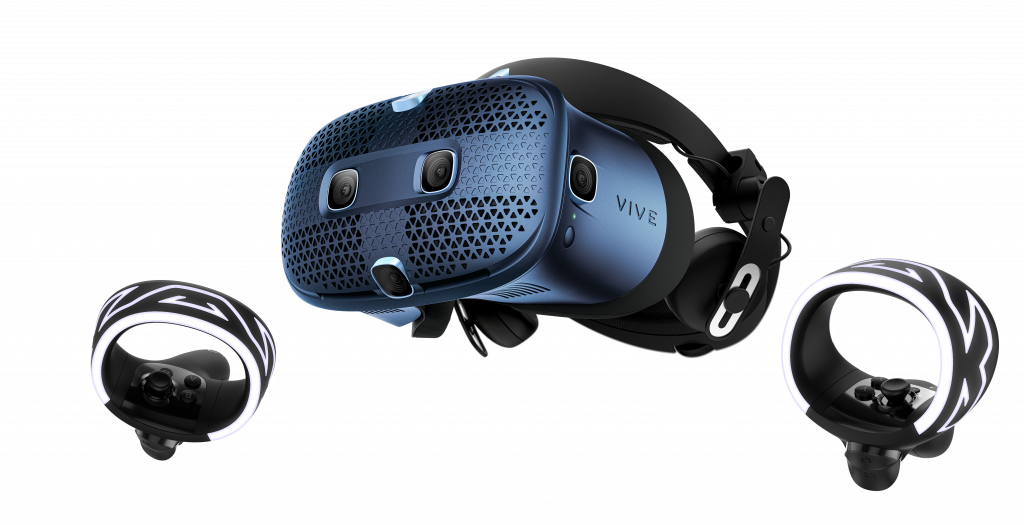
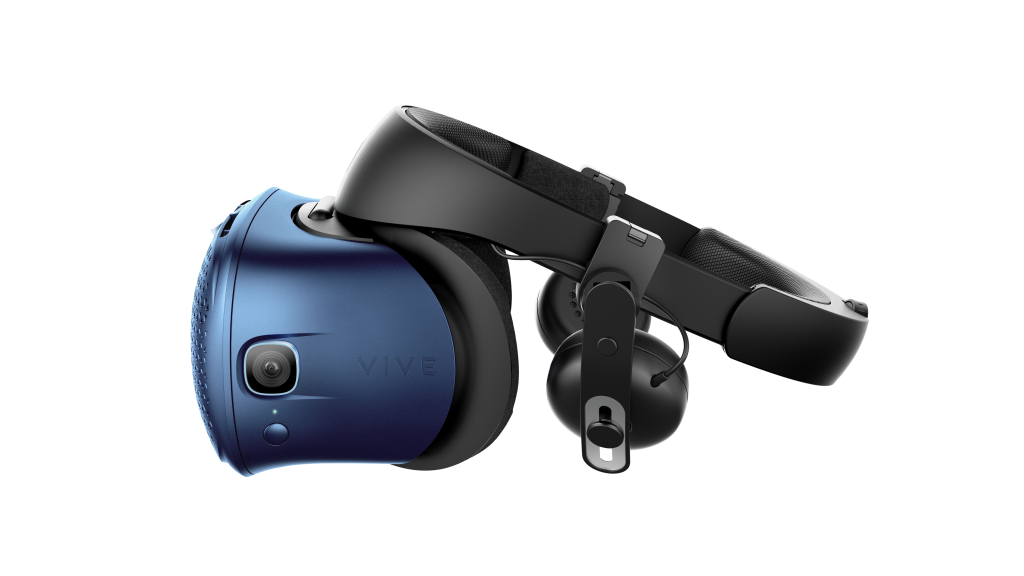

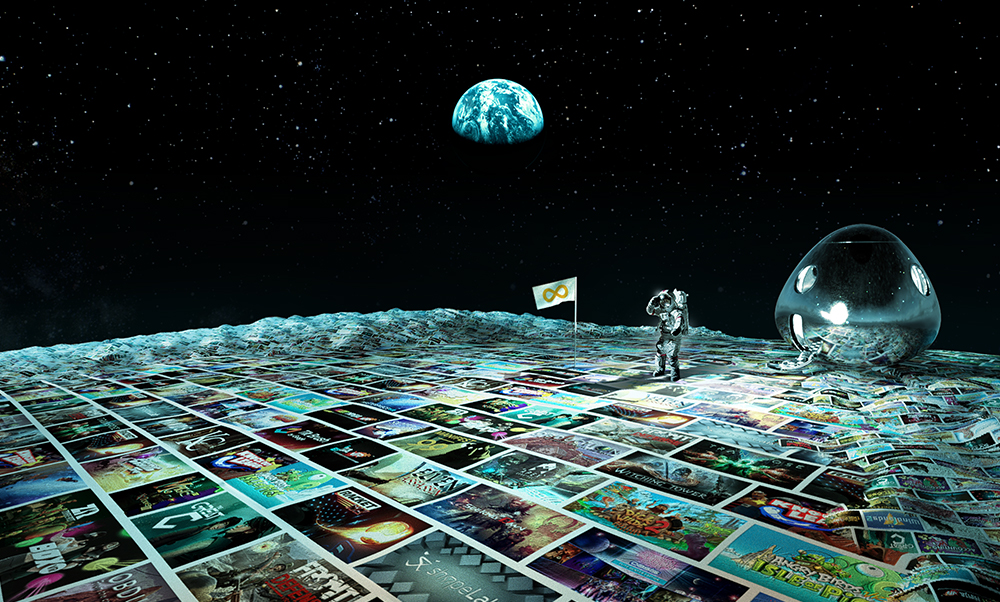
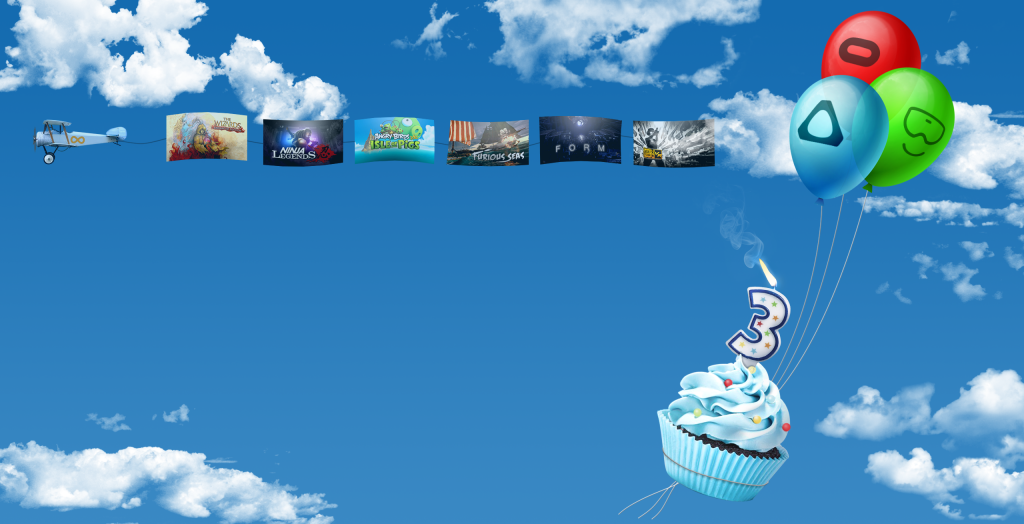



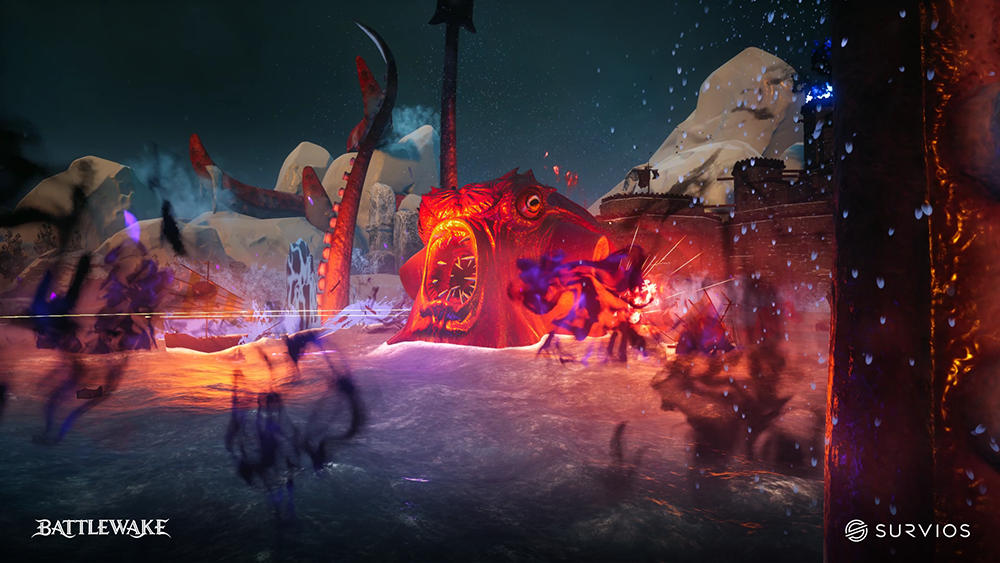




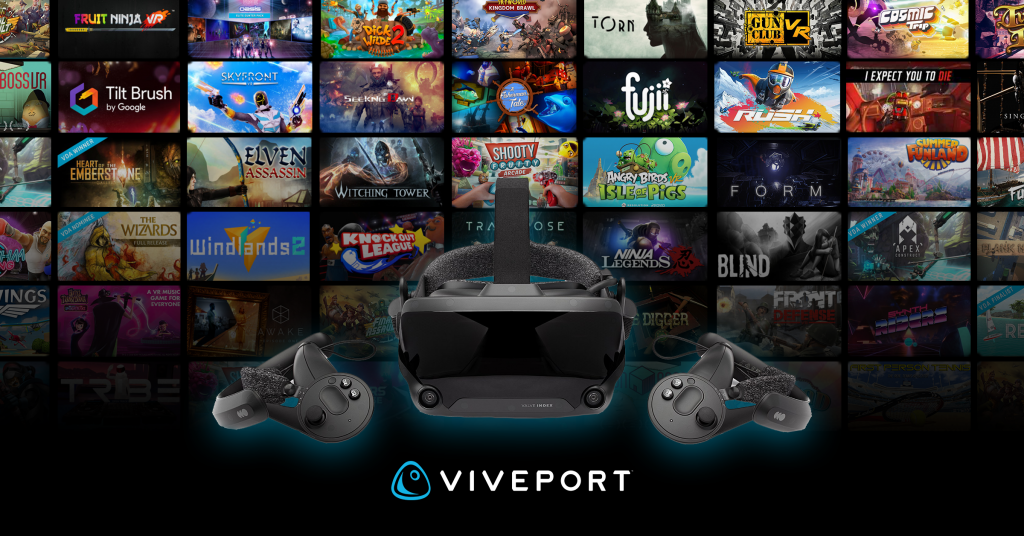
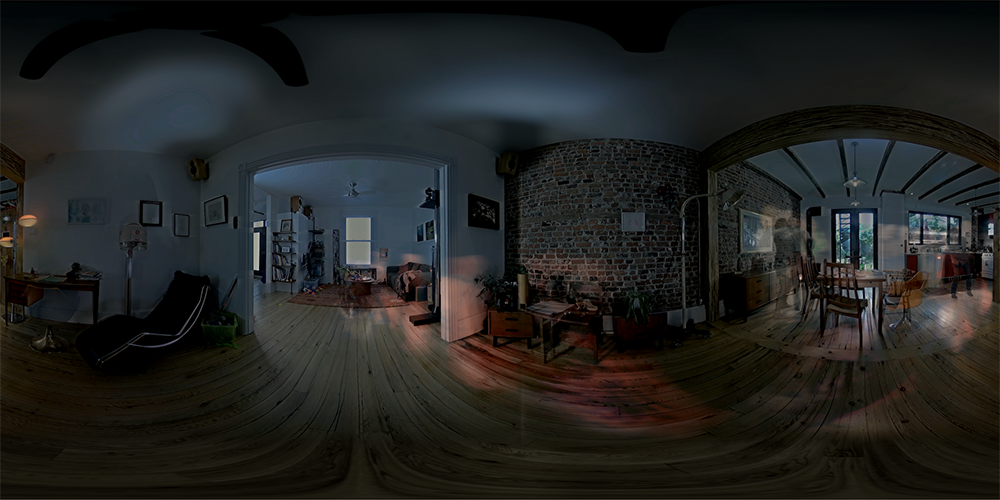
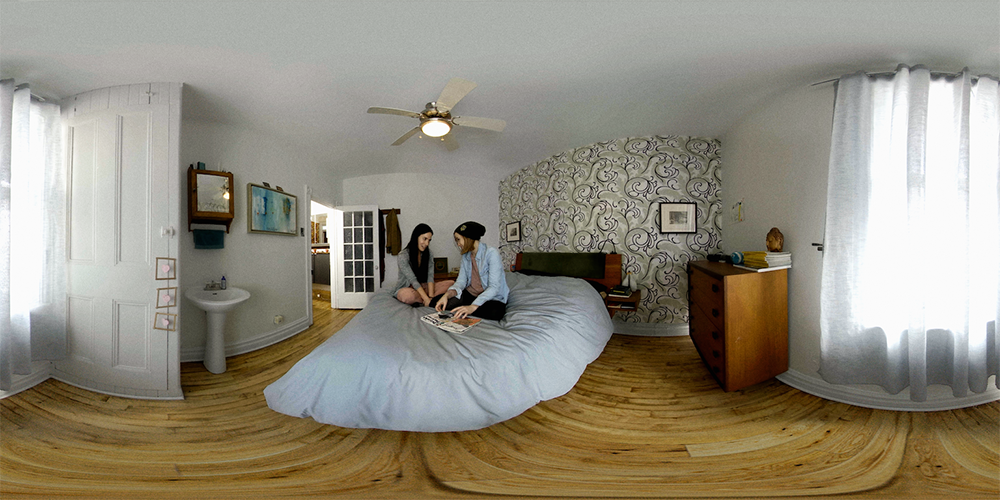
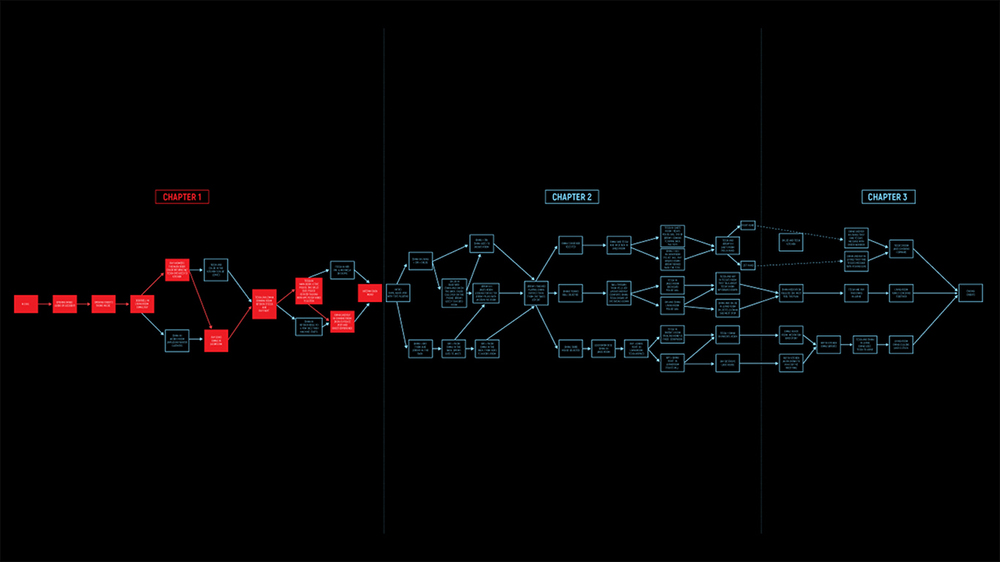
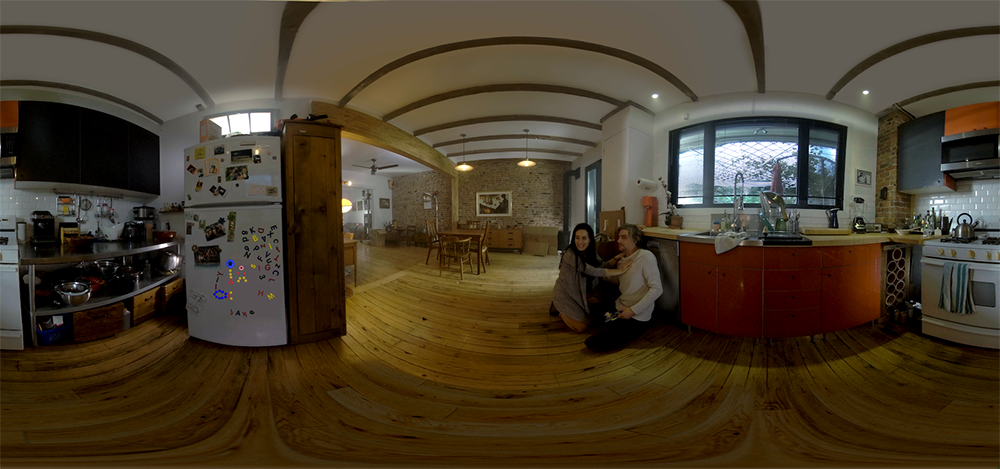




Welcome to the Vive Technical Support forum.
in VIVE Focus Plus
Posted
Hello,
If you have any questions about any of your Vive devices, feel free to ask those questions in their respective sections listed below.
For Vive and Vive Pro: https://forum.vive.com/forum/81-vive-and-vive-pro/
For Vive Cosmos: https://forum.vive.com/forum/83-vive-cosmos/
For Vive Focus: https://forum.vive.com/forum/82-vive-focus/
If you are experiencing an issue with Viveport or Viveport Infinity, please click on the following link to go to the Viveport forums. https://forum.viveport.com/
Thanks and enjoy your stay!
SuperNikoPower